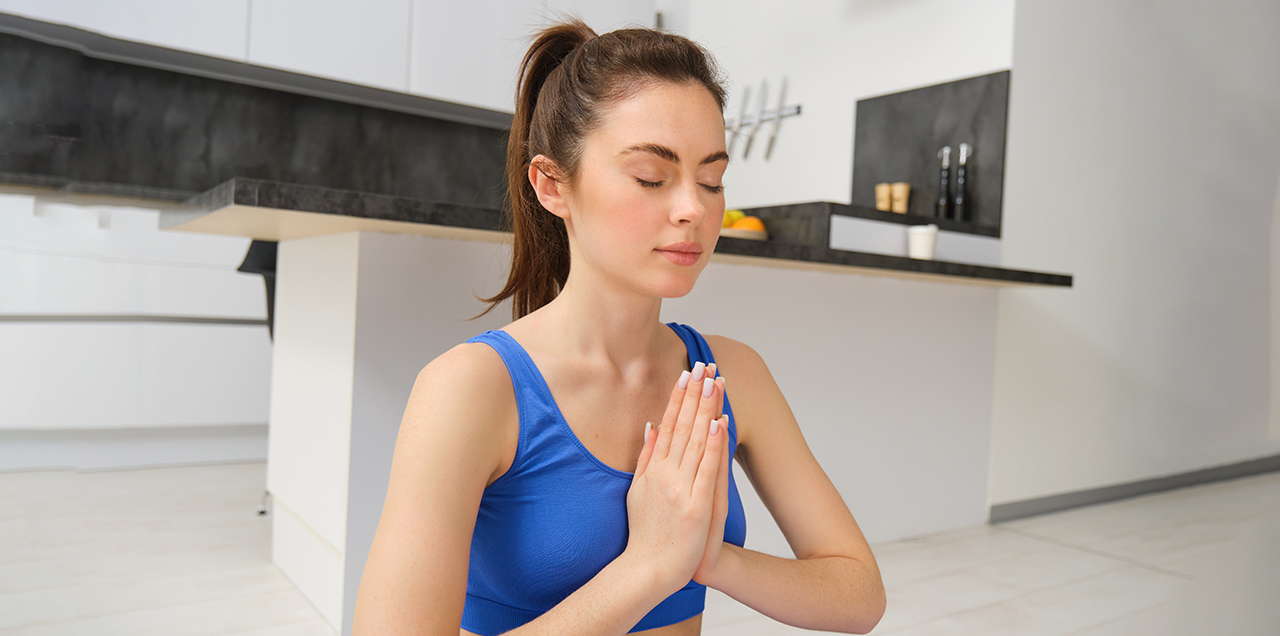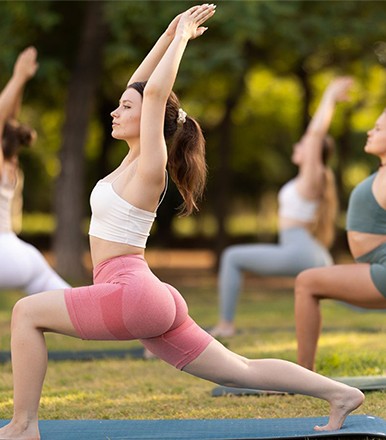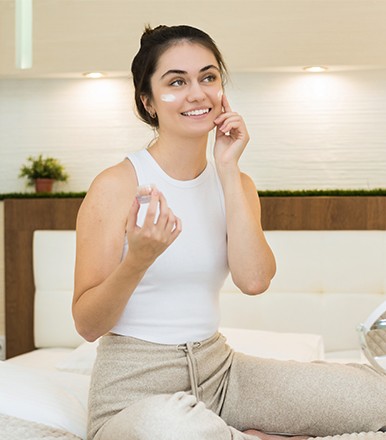Face yoga has gained significant popularity as a natural method for facial sculpting, particularly for jawline definition. This practice involves specific exercises targeting the facial muscles to potentially improve tone, reduce sagging, and enhance overall facial contours. As interest in non-invasive beauty solutions grows, many are questioning whether these exercises truly deliver results or if they're simply another passing trend in the beauty industry.
What Is Face Yoga?
Face yoga consists of targeted exercises designed to strengthen and tone the 57 muscles in the face and neck. Unlike traditional exercise routines focusing on major muscle groups, face yoga specifically addresses the often neglected facial muscles that contribute significantly to our appearance.
The methodology typically involves:
- Controlled facial movements and expressions
- Gentle resistance techniques
- Strategic pressure point stimulation
- Facial massage techniques
- Proper breathing coordinated with movements
These exercises aim to improve muscle tone, increase blood circulation, release tension, and potentially enhance the natural contours of the face. Face yoga practitioners suggest that consistent practice can help counteract the effects of aging, gravity, and lifestyle factors that impact facial appearance.
How Face Yoga May Help Define the Jawline
Jawline definition is influenced by several factors including muscle tone, subcutaneous fat, skin elasticity, and bone structure. Face yoga potentially addresses some of these elements through various mechanisms:
Facial muscle tone plays a crucial role in jawline appearance. When these muscles weaken through aging or underuse, they can contribute to sagging in the lower face and neck area. Exercise for jaw line muscles may help strengthen these structures, potentially creating more visible definition.
Circulation improvement represents another potential benefit. Increased blood flow delivers more nutrients and oxygen to tissues, potentially enhancing skin health and elasticity. This improved circulation may contribute to a more toned appearance in the jawline region.
Posture awareness forms an integral part of many face yoga practices. Proper head and neck alignment naturally showcases the jawline more effectively by reducing the appearance of a double chin and creating better overall facial proportions.
Tension release in jaw muscles can paradoxically improve definition. Chronic jaw clenching often leads to overdeveloped masseter muscles that create a square, bulky appearance rather than a sleek jawline. Jaw line exercise routines frequently incorporate relaxation techniques that may help release this tension.
Top Face Yoga Exercises for Jawline Sculpting
Several specific exercises have gained popularity among face yoga practitioners for their focus on jawline enhancement.
1. The Jaw Release
This fundamental exercise targets tension in the jawline while working the muscles that run along this area.
Technique:
- Sit with a straight spine and relaxed shoulders
- Close the lips while keeping teeth slightly apart
- Create a humming sound while pressing the tongue to the roof of the mouth
- Slowly open the jaw as wide as comfortable while maintaining closed lips
- Hold for 5-10 seconds, then slowly close
- Repeat 5-10 times
This exercise works the mentalis (chin muscle) and the digastric muscles under the jawline, potentially improving definition in this area.
2. Chin Lift
This exercise targets the often problematic submental area (under the chin) and the anterior neck muscles.
Technique:
- Sit or stand with proper posture
- Tilt the head backward to face the ceiling
- Form a puckering motion with the lips
- Hold for 5 seconds while feeling the stretch along the jawline and neck
- Return to the starting position
- Repeat 10 times
This movement engages the platysma muscle, which extends from the jawline down the neck. Toning this muscle may help reduce the appearance of sagging in this area.
3. Vowel Toning ("O" & "E")
This exercise employs exaggerated vowel sounds to engage multiple facial muscles simultaneously.
Technique:
- Maintain an upright posture
- Form an exaggerated "O" shape with the mouth, engaging surrounding muscles
- Hold for 5 seconds
- Transition to a wide "E" sound, stretching the lips horizontally
- Hold for 5 seconds
- Alternate between positions 10 times
This exercise works the orbicularis oris (mouth muscles) and risorius muscles (corner of mouth), which connect to the jawline area, potentially creating more definition.
4. Neck Resistance Push
This exercise specifically targets the muscles connecting the jawline to the neck.
Technique:
- Sit or stand with proper alignment
- Form a loose fist and place it under the chin
- Push the jaw downward against the resistance of the fist
- Maintain resistance for 5-10 seconds
- Release and repeat 10 times
For optimal results with jawline face exercises, consistency remains essential. Face yoga practitioners typically recommend daily practice of 10-15 minutes, preferably with proper form observed in a mirror.
How Long Until You See Results?
As with any exercise regimen, face yoga requires patience and consistency before results become visible. Based on practitioner experiences and limited studies:
- Initial changes in muscle awareness and tension relief may occur within 2-3 weeks
- Visible improvements in muscle tone typically begin appearing after 6-8 weeks
- More significant changes in facial contours, including jawline definition, generally require 3-4 months
- Optimal results usually develop after 4-6 months of regular practice
Several factors influence individual response times:
- Age (younger individuals typically show faster results due to greater skin elasticity)
- Genetic factors (including baseline muscle tone and fat distribution)
- Consistency of practice
- Overall health factors (including hydration, nutrition, and sleep quality)
- Starting facial muscle condition
Face yoga represents a gradual approach to facial enhancement rather than an immediate solution. The progressive nature of muscle development means results typically appear incrementally rather than suddenly.
What Science Says About Face Yoga
Scientific research specifically addressing face yoga for jawline definition remains somewhat limited, though the field is expanding:
A 2018 study published in JAMA Dermatology examined the effects of facial exercises in middle-aged women over a 20-week period. Participants performed 30-minute daily routines, with results showing measurable improvements in upper and lower cheek fullness. Dermatologists estimated participants' ages had decreased by approximately three years visually after completing the program.
Research in the Journal of Clinical & Diagnostic Research demonstrated increased blood circulation and muscle strength in treated facial areas following a structured facial exercise program.
From an anatomical perspective, several points support the theoretical foundation of face yoga:
- Facial muscles respond to resistance training similarly to other skeletal muscles
- Improved circulation typically benefits tissue health and appearance
- Muscle hypertrophy (growth) occurs in facial muscles, though more subtly than in larger muscle groups
- Skin elasticity plays a significant role in how visible muscle tone improvements appear externally
Current limitations in the research include:
- Relatively small sample sizes in existing studies
- Few studies focusing specifically on jawline definition
- Limited long-term data on sustained results
- Variations in exercise protocols making direct comparisons difficult
Additional well-designed clinical studies would further clarify the effectiveness of these techniques for jawline enhancement.
Myths vs. Facts
Several misconceptions exist regarding face yoga and its potential effects on jawline appearance:
Myth: Face yoga can completely reshape the jawline regardless of bone structure.
Fact: While exercises may improve muscle tone and skin appearance, they cannot alter underlying bone structure or dramatically change genetic facial features.
Myth: Facial exercises create wrinkles through repeated movements.
Fact: Properly performed face yoga exercises typically involve controlled movements rather than repetitive expressions that cause wrinkles. Evidence suggests improved muscle tone may actually support skin structure.
Myth: Results appear quickly with minimal effort.
Fact: Meaningful improvements require consistent practice over months, similar to body fitness programs.
Myth: Face yoga alone can address all factors affecting jawline appearance.
Fact: Most effective approaches combine exercises with proper skincare, hydration, nutrition, and overall health practices.
Myth: All exercises work equally well for everyone.
Fact: Individual facial anatomy, age, and baseline muscle tone significantly affect results, requiring personalization of routines for optimal outcomes.
Understanding these distinctions helps establish realistic expectations when incorporating face yoga into a facial enhancement regimen.
Conclusion
Face yoga represents a non-invasive approach to potentially enhancing jawline definition through targeted muscle exercises. While research continues to evolve, existing evidence suggests these techniques may improve muscle tone and facial appearance when practiced consistently over time. For those seeking natural methods for jawline enhancement, face yoga offers a low-risk option worth consideration as part of a comprehensive approach to facial aesthetics.
Check out Hello Fitness Magazine. There is never a wrong time to go on a fitness quest. Contact us and allow us to assist you in leading a better lifestyle. Follow us on Instagram. We share the best Health & Fitness related Articles for information based on healthy eating, health and fitness recommendations, health problems and their solutions, human body fitness, and much more.














